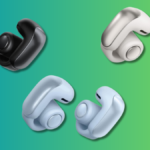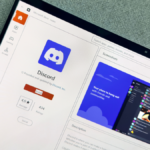The Exciting Features of Nintendo’s Switch 2
Recently, Nintendo revealed its next-generation console aptly titled the Switch 2. In a previous discussion, insights were shared regarding the console’s overall nature, often deemed mundane, yet arguably a wise decision on Nintendo’s part. However, one particular feature stands out for its excitement: the innovative mouse controls.
By detaching the Joy-Con 2 controller and positioning it sideways, it remarkably transforms into a mouse. When engaging with a compatible game, players will notice a cursor immediately appearing on the screen, providing a gaming experience reminiscent of playing on a PC. Reorienting the controller to its upright position seamlessly reverts to the traditional console setup.
This functionality feels almost magical. While consoles typically excel in ease of use compared to PCs—often lending themselves to more relaxed gaming locations like the living room—certain game genres such as first-person shooters and strategy games have often faltered in adapting to these platforms. Although previous efforts, like motion controls, have aimed to bridge this gap, experiencing the Switch 2’s mouse mode offers an altogether superior experience.
This breakthrough allows the comfort associated with consoles and the precision control typical of PCs to coexist beautifully. Though there are some limitations to consider, the overall performance of this feature was surprisingly impressive.
Take, for instance, Metroid Prime 4. Originating on the GameCube, its shooting mechanics relied heavily on a somewhat outdated lock-on system. With its re-releases on the Wii and the original Switch, improvements were made with motion controls, though they could become tiresome over time. In Metroid Prime 4, the gameplay now feels comparable to other modern shooters—albeit with the option to still utilize the lock-on feature.
This development is significant. While an exploration-centric franchise like Metroid may not intrinsically require advanced mechanics, it performed exceptionally well during hands-on testing, opening vast opportunities for the Switch 2. As a result, titles like Call of Duty on Nintendo’s platform may not merely serve as compromised alternatives but could very well represent the optimal gaming experience next to a PC. This potential rings especially true for genres such as strategy games, which often skip console releases entirely; Civilization VIII on the Switch 2 felt incredibly akin to the desktop experience.
Even if conventional uses do not resonate with every player, the mouse functionalities of the Switch 2 reveal Nintendo’s signature creativity. Approximately one month post-launch, the company intends to reintroduce its latest Mario Party title with enhancements tailored for the Switch 2, making full use of the mouse capabilities.
During a pre-release session, testing the Switch 2 edition of this title involved mouse control to engage in a mini-game, reminiscent of air hockey. Other mini-games showcased unique experiences that wouldn’t be viable with standard mouse functions.
One mini-game allowed for virtual spray painting of objects using the Joy-Con, requiring a quick shake to replenish the virtual paint. While it may not be the most intricate gameplay, it highlighted the advantage of incorporating mouse functionality within an established controller, featuring integration with motion controls.
Another mini-game involved building a block tower, where using the mouse pointer alongside the Joy-Con’s gyro function required skill to stack without toppling. The added challenge of odd shapes, such as a Yoshi plush, rounded out a thrilling experience.
Perhaps the most significant demonstration of Nintendo’s inventive approach with mouse capabilities can be seen in Drag X Drive, a basketball simulation that allows players to control a character in a wheelchair. Despite its simplistic graphics and animations reminiscent of a tech demonstration, it showcases a unique application of the mouse controls.
In this game, both Joy-Con 2 controllers are utilized in mouse mode, enabling players to steer their left and right wheels independently. While this method proved to be slightly tiring, it offered an unusual yet authentic feeling, resonating with real-world experiences of navigating in a wheelchair—a realm better analyzed by those well-versed in the subject.
This game also highlighted the joystick integration with the controller’s vibration feature, effectively simulating the drag of the wheels against the ground during turns—a thoughtful addition that contributed fluidity to character control, enabling moments of excitement such as executing a dunk.
While this creative approach is thrilling, an element of concern lingers. The excitement for fresh gaming experiences on the Switch 2 is tempered by the fear that mouse controls may fade into obscurity if developers do not embrace them. Nintendo’s history with accessories, such as the Wii MotionPlus, raises apprehensions about the longevity of this feature after its initial first-party releases.
Moreover, physical usability is a factor worth considering. Although the Joy-Con 2 features capabilities beyond traditional mice, they sacrifice ergonomic comfort. Their slim design necessitates gripping them tightly in a way that doesn’t come naturally, and navigating the face buttons while in mouse mode can prove challenging. An accommodating feature would be remapping the right stick’s sensitivity to the face buttons—something to ponder for future updates.
All things considered, the inclusion of mouse controls is a positive addition—sparking hope that this innovation may eventually pave the way for emulating Nintendo DS and Wii U titles on Switch Online. The unique touch controls of those older consoles have made cross-platform gaming a challenge. Yet, with a wide screen and a mouse pointer effectively serving as a stylus, this issue may finally find a resolution, igniting excitement among fans of games like The World Ends With You.












